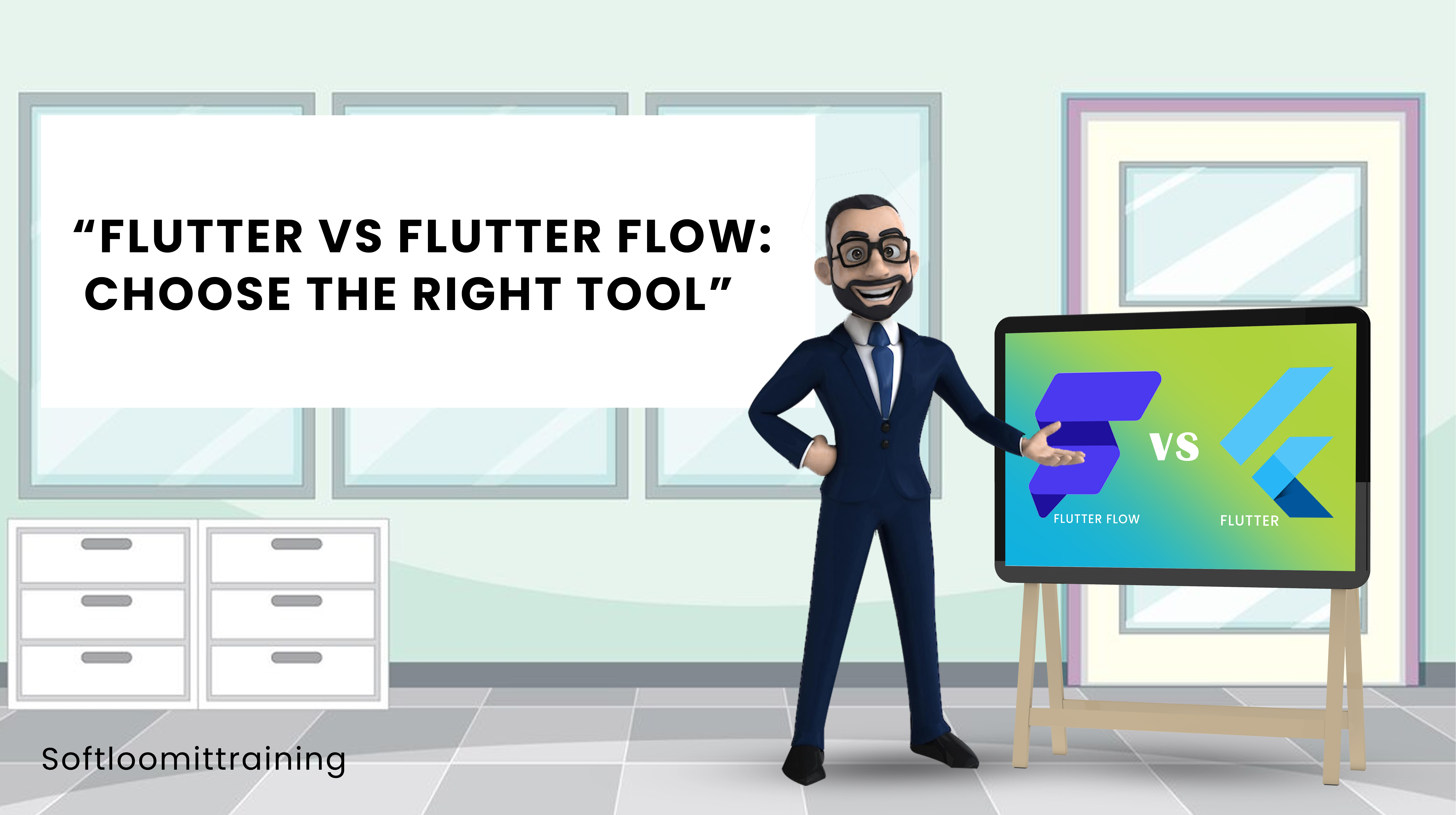Developers are constantly searching for tools that streamline processes, boost productivity, and deliver top-notch user experiences in the rapidly evolving world of mobile app development. There are two prominent contenders in this space: Flutter and Flutter Flow. Both tools provide robust solutions, but understanding their nuances is essential to making an informed decision. Here, we will examine the strengths and differences between Flutter vs Flutter Flow to help you decide which tool is right for you.
Understanding Flutter:
In recent years, Flutter has gained immense popularity with developers due to its ability to build natively compiled applications from a single codebase for mobile, web, and desktop devices. With its Dart programming language, it provides a variety of pre-designed widgets that provide a consistent and visually appealing user interface across multiple platforms. Developers love the fact that Flutter lets them build, experiment, and fix bugs in real-time, thanks to its hot reload feature.
Strengths of Flutter:
● Single Codebase, Multiple Platforms
Using Flutter, you can build applications for multiple platforms using a single codebase, reducing development time and ensuring a consistent user experience.
● Rich Set of Widgets
The Flutter ecosystem includes a broad range of customizable widgets that allow developers to create beautiful and intricate UIs that contribute to the native experience across platforms.
● Hot Reload
It is possible to speed up the development process by using Flutter’s hot reload feature. Instantaneous code viewing allows developers to experiment, find issues, and improve app functionality.
Understanding Flutter Flow
A visual development platform like Flutter Flow, on the other hand, simplifies the development of apps. Using it, you can design, prototype, and build Flutter applications without having to dive into code as it runs on top of Flutter. With Flutter Flow, designers and developers can collaborate seamlessly to create beautiful and functional applications.
Strengths of Flutter Flow:
- Visual Development
Users can design and prototype applications using Flutter Flow’s visual development interface without ever writing code, making it a great choice for designers and those who may not have a strong background in coding.
- Collaboration
As a result of the collaboration between designers and developers, Flutter Flow allows designers to create the initial visual elements and developers to take over the more complex coding tasks. This streamlines the development process and enhances productivity.
- Code Export
In spite of its visual design, Flutter Flow allows developers to export code for further customization. This allows developers to fine-tune the codebase when necessary, bridging the gap between visual design and code implementation.
Choosing the Right Tool
Choosing between Flutter and Flutter Flow depends on a variety of factors, including the project requirements, team composition, and level of control you desire.
- For Full Code Control
Flutter is the better choice for developers who enjoy coding and want to have a hands-on approach throughout the development process.
- For Visual Design and Collaboration
If your team includes designers who play a significant role in the app development process, or if you prioritize a visual approach, Flutter Flow may be the best fit. In addition to facilitating collaboration between designers and developers, it also allows for rapid prototyping without extensive coding.
- For Rapid Prototyping and Iteration
For projects requiring quick development cycles, Flutter Flow excels at prototyping and iterating. Designers can experiment with different layouts and features with the visual interface before they hand them over to developers for final refinement.
Therefore, Flutter and Flutter Flow both offer unique strengths, so choosing between them ultimately depends on your preferences and specific needs. While Flutter Flow caters to developers with a visual approach, Flutter offers unparalleled control and flexibility to developers who enjoy coding. Providing the best Flutter course in Kochi, Softloom IT Training has proven to be a valuable introduction to cross-platform app development. By the end of this course, participants will be proficient at creating seamless experiences across both Android and iOS platforms, having acquired a deep understanding of Flutter’s capabilities.







